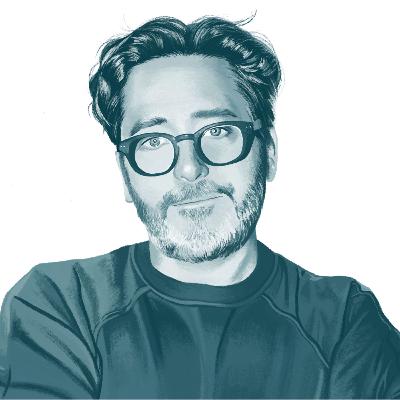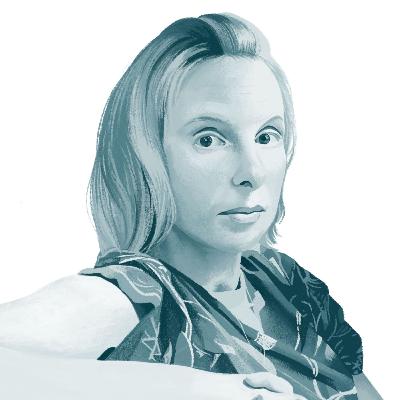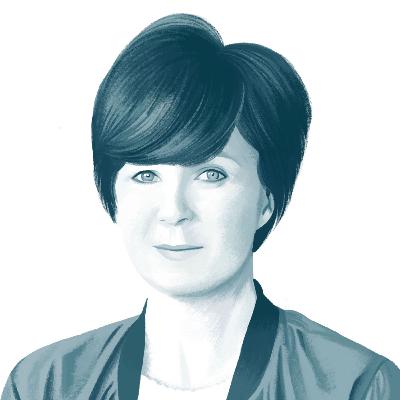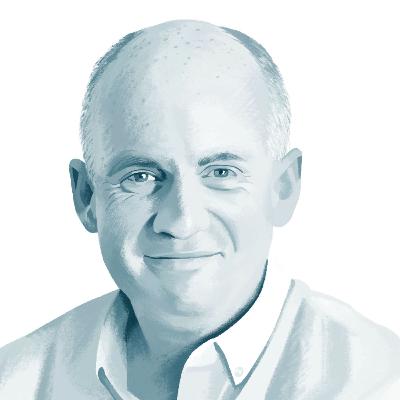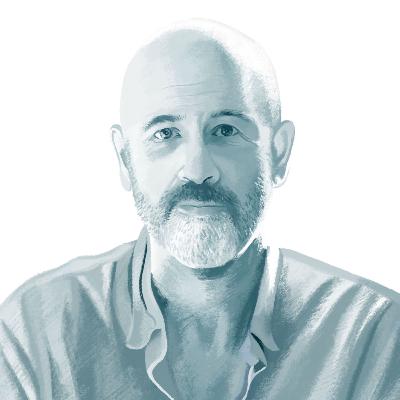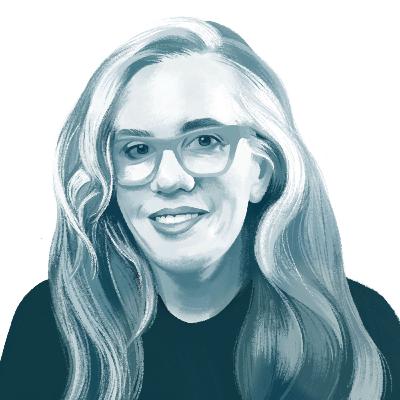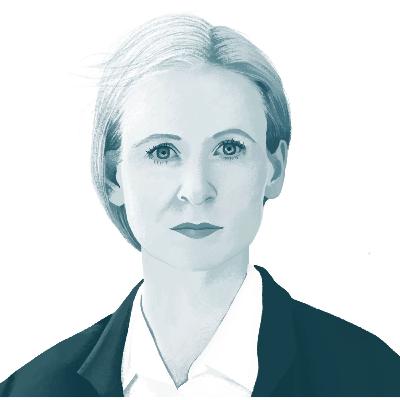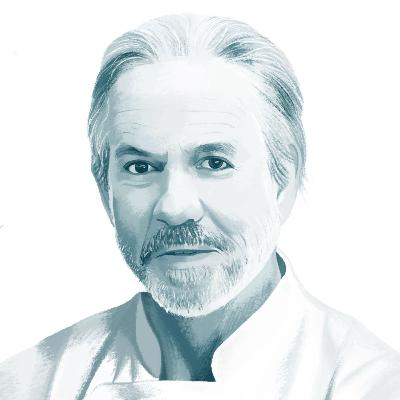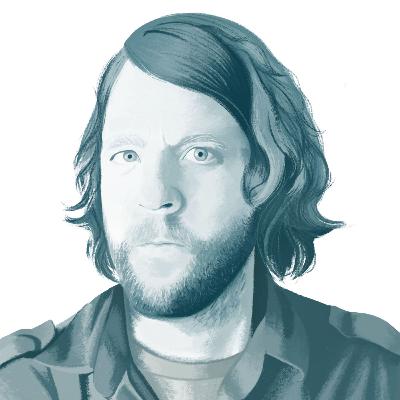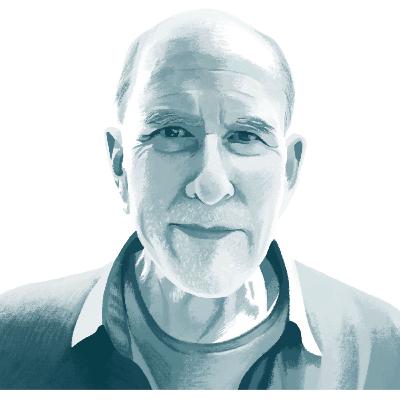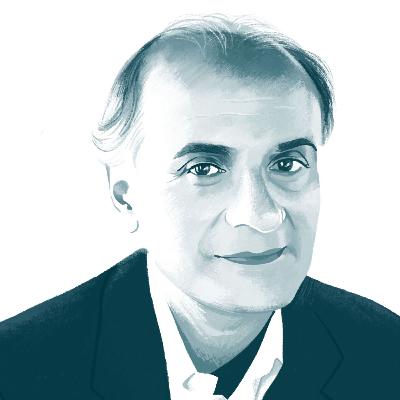Discover Time Sensitive
Time Sensitive

Time Sensitive
Author: The Slowdown
Subscribed: 518Played: 11,650Subscribe
Share
© 2024 The Slowdown
Description
Candid, revealing long-form conversations with leading minds about their life and work through the lens of time. Host Spencer Bailey interviews each guest about how they think about time broadly and how specific moments in time have shaped who they are today.
Explore more at timesensitive.fm
Explore more at timesensitive.fm
146 Episodes
Reverse
The British designer Jay Osgerby believes in designing rigorously simple objects that are deeply felt and, hopefully, appreciated for generations to come. As the co-founder of the London-based industrial studio Barber Osgerby, Jay and his partner in the firm, Edward Barber, emphasize experimentation, innovation, and a material- and craft-forward design approach to their products, furniture, architecture, and interiors. Across their nearly 30-year history as a studio, Barber Osgerby has taken a “fewer, better things” approach and along the way built a rich and varied body of work that includes the 2012 London Olympics torch, a commemorative £2 coin (2012), a Victoria and Albert Museum installation with BMW (2014), Vitra’s Tip Ton chair (2011), and paper lanterns crafted by Ozeki & Co. in Gifu, Japan. Each project exudes clarity, calm, and consideration—and always a sense of character. On this episode of Time Sensitive, Osgerby shares his optimistic views on A.I. as a means toward more people engaging in craft and handwork; considers what his years inside factories and surrounded by craftspeople have taught him about human ingenuity; and reflects on objects as vessels for memory, history, and soul.Special thanks to our Season 12 presenting sponsor, Van Cleef & Arpels.Show notes: Jay Osgerby[05:08] Flos[8:37] 2012 London Olympics torch[8:37] £2 coin (2012)[8:37] Victoria and Albert Museum[8:37] London Design Biennale[14:18] Design Museum in Tallinn, Estonia[14:18] Isokon[15:58] Dieter Rams[15:58] Ettore Sottsass[15:58] Memphis Group[15:58] Rationalism[20:25] Pitt Rivers Museum[24:56] Vitra[28:49] Arts and Crafts Movement[29:09] Glenn Adamson[31:01] Bill McKibben[36:38] Blueprint[36:38] Paul Smith[38:01] Galerie Kreo[39:00] Tyler Brûlé[41:36] Venini[51:34] Vico Magistretti[51:34] Achille Castiglione[53:07] Ozeki & Co.
For the James Beard Award–winning writer and culinary historian Michael W. Twitty, kitchens provide a multitude of significant purposes that stretch far into the past and carry through to the present. Beyond being places where people cook, share, and eat food, they also serve as vital spaces in which to gather in community, to grieve and process trauma, to teach and learn, to dance, to heal, and to experience Black love and joy. Twitty’s multilayered cooking draws on his family roots, his personal history, and his deep culinary knowledge of the American South. His latest title, the cookbook Recipes From the American South (Phaidon), brings his skill as a home cook and historically informed recipe-maker to the fore, allowing ingredients and dishes to transform into cultural and temporal touchpoints. On this episode of Time Sensitive, Twitty reflects on what researching and uncovering his ancestry has taught him about Southern cooking and himself, and shares why, for him, food functions as a tangible form of cultural reclamation and emotional healing.Special thanks to our Season 12 presenting sponsor, Van Cleef & Arpels.Show notes:Michael W. Twitty[7:43] Saidiya Hartman[8:43] Their Eyes Were Watching God (1937) and Mules and Men (1935) by Zora Neale Hurston[9:42] Gonze Lee Twitty[16:50] Brer Rabbit [14:33] National Museum of African American History and Culture[19:42] “Amazing Grace”[29:22] Gullah Geechee[54:04] Recipes From the American South (2025)[54:56] Southern Discomfort Tour[1:03:44] Koshersoul: The Faith and Food Journey of an African American Jew (2023)[1:03:44] Rice: A Savor the South Cookbook (2021)[1:03:44] The Cooking Gene: A Journey Through African-American Culinary History in the Old South (2018)[1:07:52] Ryan Coogler[1:19:17] James Hemings[1:19:17] Edith Fossett and Fanny Hern[1:19:17] Ursula Granger[1:19:31] Gage & Tollner[1:19:31] John Birdsall[1:19:31] Tennessee Williams[1:19:31] Truman Capote
For the Paris-born, New York–based artist Camille Henrot, time practically never stands still. Across her work in film, drawing, painting, sculpture, installation—and soon, live performance—Henrot has developed ways of stretching and distorting time, seamlessly shifting from moments of potent, rapid-fire intensity to quiet reflection. While her work carries a theory-driven ferocity and intelligence, it’s also incredibly playful. Hers is serious art that manages—often with a knowing, subtle wink—to not take itself too seriously.On this episode of Time Sensitive, Henrot considers the subjectivity of speed and slowness; previews her upcoming first-ever performance-art piece, slated to premiere in 2026 and a collaboration with the nonprofit Performa; and reflects on why, for her, a work is technically never finished. She also shares her fraught fascination with animals, childhood, and the climate crisis—the intersection of which she examines in-depth in her soon-to-debut film “In the Veins.”Special thanks to our Season 12 presenting sponsor, Van Cleef & Arpels.Show notes:Camille Henrot[4:30] RoseLee Goldberg[4:30] Performa Biennial[6:37] Buster Keaton[6:37] Tex Avery[7:03] Estelle Hoy[7:19] Adam Charlap Hyman of Charlap Hyman & Herrero[16:10] “In the Veins” (2026)[17:45] "Grosse Fatigue"[17:45] Massimiliano Gioni[38:51] Roland Barthes[45:36] Pierre Huyghe[47:51] Ikebana Sogetsu[51:46] Okwui Enwezor[55:03] Hypernormalisation by Adam Curtis (2016)[59:51] Jacob Bromberg[59:51] Akwetey Orraca-Tetteh[1:08:50] Adrienne Rich[1:08:50] Ursula K. Le Guin[1:08:50] Annie Ernaux[1:08:50] Mother Reader by Moyra Davey (2001)[1:08:50] Jenny Schlenzka[1:10:14] Maggie Nelson[1:11:02] Mothers: An Essay on Love and Cruelty by Jacqueline Rose (2019)[1:11:02] Representation of Motherhood by Donna Bassin (1994)[1:13:00] Louise Bourgeois
The cook and food writer Alison Roman frequently emanates and celebrates a certain spilled-milk imperfectionism. Her on-camera candor and laid-back cooking style have both contributed to growing her devoted audience of home cooks as well as the food-curious, many of whom have followed her and her singular recipes over the past decade-plus, from her prior media roles (Bon Appétit and The New York Times) to the independent-platform path she’s now on. That’s not to mention her three best-selling cookbooks, Dining In (2017), Nothing Fancy (2019), and Sweet Enough (2023), as well as her forthcoming fourth title, Something from Nothing, out Nov. 11. For Roman, there’s joy and wisdom to be found in embracing a certain amount of honest-to-goodness mess, all while maturing into different versions of herself, in and out of the kitchen.On the episode, she reflects on the diaristic quality of her dishes, how time and money have shaped her cooking style and recipe-writing approach throughout her life, and the beauty of prioritizing tangible things in our ephemeral digital age.Special thanks to our Season 12 presenting sponsor, Van Cleef & Arpels.Alison Roman[4:49] Something From Nothing (2025)[5:52] Dining In (2017)[5:52] Sweet Enough (2023)[10:38] Nothing Fancy (2019)[16:06] First Bloom[22:03] The Tenth Muse by Judith Jones (2007)[22:03] Home Cooking by Laurie Colwin (1988)[22:03] Books by Anthony Bourdain[22:03] Blood, Bones & Butter by Gabrielle Hamilton (2011)[32:00] Chris Bernabeo[47:46] Solley’s[56:24] Christina Tosi[57:22] Bon Appétit
For the British writer and cultural critic Olivia Laing, restoring and tending to their backyard garden has prompted complex questions of power, community, and mystery, concepts that they beautifully excavate in their latest book, the fascinating and mind-expanding The Garden Against Time: In Search of a Common Paradise. Whether in their nonfiction works, including the critically acclaimed The Lonely City (2016), their art and culture writing and criticism (2020’s Funny Weather: Art in an Emergency), or their novels (2018’s Crudo and the forthcoming The Silver Book, out this November), Laing turns an incisive eye to examining what it will take for people—our “temporal selves,” as they put it—to forgo loneliness and isolation, reconnect with nature and one another, and flourish on a planet in crisis.On this episode, recorded in their apartment at the Barbican in London, Laing explores gardening and writing’s symbiotic relationship; the act of rebelling against a reactive culture by embracing slowness; and the importance of imagining, in vivid detail, the kinds of utopias we could one day very well live in.Special thanks to our Season 12 presenting sponsor, Van Cleef & Arpels.Show notes:Olivia Laing[4:35] The Barbican[7:39] “The Garden Against Time” (2024)[7:53] Mark Rumary[9:08] Notcutts[14:08] “The Lonely City: Adventures in the Art of Being Alone” (2016)[16:07] Jhumpa Lahiri[18:41] Piet Oudolf[19:21] Middleton Place[19:21] The Sackler family[22:54] “Modern Nature” (1991)[24:07] “Paradise Lost” (1667)[25:40] “The Secret Garden” (1911)[25:40] “Tom’s Midnight Garden” (1958)[29:29] “The Garden” (1681)[30:29] “Everybody: A Book About Freedom” (2021) [35:07] “The Body Keeps the Score: Brain, Mind, and Body in the Healing of Trauma” (2014)[39:57] David Wojnarowicz’s "Magic Box"[39:57] Ana Mendieta[40:51] Agnes Martin[43:08] “Funny Weather: Art in an Emergency” (2020) [45:29] “Crudo” (2018) [48:20] “A Dance to the Music of Time” (1951–1975) [50:29] “The Silver Book” (2025)[52:48] Federico Fellini[52:48] Pier Paolo Pasolini[55:17] “News from Nowhere” (1890)
The British author and journalist Oliver Burkeman has spent decades pondering what it means to live a meaningful life, both in his former Guardian column “This Column WIll Change Your Life” and across several books—most recently, Meditations for Mortals, out in paperback this October. That’s why he brings a healthy dose of skepticism to so-called “time management” systems and productivity hacks as a means toward true fulfillment. Burkeman’s compelled by the notion that, rather than being separate from time, human beings are time. If people faced the reality of their limited time on the planet head on, he believes there’s a real chance to experience greater, more engaged feelings of aliveness.On the episode—our Season 12 kick-off—Burkeman discusses why he’s eschewing perfectionism and finding unexpected liberation in the premise that, to some extent, the worst has already happened, and the best may still be ahead.Special thanks to our Season 11 presenting sponsor, Van Cleef & Arpels.Show notes:Oliver Burkeman[4:26] “Meditations for Mortals” (2024)[6:48] Donald Winnicott[7:46] Martin Heidegger[7:46] "Technics and Civilization" (2010)[7:46] “Being and Time” (1927)[7:46] “Time Warrior” (2011)[7:46] “Time Surfing” (2017)[7:46] “Anti-Time Management” (2022)[10:14] Medieval peasants[10:14] “The 4-Hour Workweek”[13:18] Alicja Kwade[19:23] “Ichi-go, ichi-e” (“one time, one meeting”)[22:00] Eckhart Tolle[22:36] Agnes Martin[23:28] “The Road Not Taken”[40:03] “This Column Will Change Your Life”[51:00] Nicholas Carr[51:00] Clay Shirky[53:40] Jennifer Roberts[59:04] Pomodoro Technique [59:13] Kanban[1:01:33] James Hollis[1:02:40] Alfred Adler[1:02:40] “The Courage to Be Disliked” (2024)[1:06:24] Stoicism
As the physicist and astrobiologist Sara Imari Walker—the author of the mind-expanding book Life as No One Knows It: The Physics of Life’s Emergence—sees it, every single thing on Earth can be traced to life’s beginnings. Walker studies the origins of life on this planet—one of science’s greatest unsolved puzzles—and, beyond that, whether alien life exists on other planets. As part of her research, she’s advancing a physics known as “assembly theory,” a new way of thinking and talking about life’s origins and, in turn, time. She displays that rare gift for demystifying deeply layered concepts—and for reminding us of how profound it is to be alive, in this moment, in the first place. On this special episode—produced in partnership with the Aspen Art Museum and recorded in Aspen, Colorado, during the inaugural AIR festival earlier this month—Walker makes a compelling case for why understanding life’s origins is crucial to understanding ourselves.Special thanks to our episode sponsor, the Aspen Art Museum. Show Notes:Sara Imari Walker[6:59] Assembly theory[10:00] Thomas Moynihan[11:13] “Life as No One Knows It: The Physics of Life's Emergence” (2024)[13:36] Michael Lachmann[18:38] Lee Cronin[18:48] Bertrand Russell [21:04] “A.I. Is Life”[24:10] Paley’s watch argument[25:36] Steve Jobs[25:54] “Reflecting on the iPhone's cultural impacts as it turns 18”[29:14] “It’s Time to Retire the Word ‘Technology’”[32:46] Copernican Revolution[36:14] “Hundert Autoren gegen Einstein” or “One Hundred Authors Against Einstein” (1931)[40:54] Arizona State University: School of Earth and Space Exploration[45:03] AIR Aspen[46:20] Carlo Rovelli[47:44] Thaddeus Mosley[47:54] Constantin Brâncuși[47:55] Isamu Noguchi
In 2003, when the author James Frey published his first book, A Million Little Pieces—a gut-punch account of his experience with addiction and rehab—nobody could have expected what would come next. Thanks to an Oprah Book Club endorsement, A Million Little Pieces was instantly catapulted to bestseller status, but soon blew up in scandal after Frey admitted to having falsified certain portions of the book, which had been marketed as a memoir. The drama that ensued sparked a media controversy—one that now, around 20 years later, feels petty and misplaced, especially in the context of today’s cancel-culture climate. More than 10 million copies of A Million Little Pieces have sold since, and Frey is still at it, writing, publishing, and pushing the boundaries of his art. His latest novel, Next to Heaven, is a rollicking, raunchy, absurd-yet-not satire about money, murder, and the all-too-human desires for power, pleasure, and greed. On the episode—our Season 11 finale, in which Frey sat lotus for the entire duration—he reflects on the A Million Little Pieces saga; his long-term study of Taoism; writing as a gateway to vulnerability; and why love, for him, is the greatest drug there is.Special thanks to our Season 11 presenting sponsor, Van Cleef & Arpels.Show notes:James Frey[5:08] “Tao Te Ching”[5:08] Lao Tzu[5:08] Stephen Mitchell[5:08] Taoism[8:51] Cubism[13:11] “A Million Little Pieces” (2003)[14:16] “Next To Heaven” (2025)[14:16] New Canaan, Connecticut[17:14] Jackie Collins[17:14] “Hollywood Wives” (1983)[17:14] Danielle Steel[21:35] Honoré de Balzac[29:37] “Katerina” (2018) [29:37] “Full Fathom Five” (1947) by Jackson Pollock[37:14] “Larry King Live” (2006)[39:09] “Tropic of Cancer” (1971)[42:24] “Up to Me” (1985)[44:20] “Kissing a Fool” (1998)[52:22] “My Friend Leonard” (2005)[52:22] “Bright Shiny Morning” (2008)[52:22] “The Final Testament” (2011)[58:56] “Author Is Kicked Out of Oprah Winfrey’s Book Club”[58:56] “James Frey: ‘I Always Wanted to Be the Outlaw’”[01:03:18] Bret Easton Ellis[01:03:18] Jay McInerney[01:03:18] Norman Mailer[01:10:54] Rashid Johnson[01:10:54] HBO’s “Native Son” (2019)
Through her sharp and biting political commentary—whether as host of the podcast Fast Politics, as a special correspondent for Vanity Fair, or as a political analyst on MSNBC—Molly Jong-Fast has, over the past decade, become something of a household name. But, as the daughter of the once-famous author and second-wave feminist Erica Jong—whose 1973 novel Fear of Flying catapulted her into the literary limelight—she has actually been in the public eye for much longer, decades before this more recent notoriety of her own making. Jong-Fast’s latest book, the searing, heartbreaking (but also, at times, hilarious) memoir How to Lose Your Mother, is in some sense an effort to take her story back after being in the shadow of her narcissistic, too often out-of-reach mother for so long. It’s also a book about aging and frailty, and an extremely difficult, gut-wrenching year: In 2023, Erica was diagnosed with dementia, right around the same time that Molly’s husband learned he had a rare cancer.On the episode, Jong-Fast talks about her own actual fear of flying, in addition to her mother’s book of the same name; 27 years of sobriety and how her time in A.A. has transformed her life; and the importance of confronting the vicissitudes of aging and one’s passage through time.Special thanks to our Season 11 presenting sponsor, Van Cleef & Arpels.Show notes:Molly Jong-Fast[4:28] “Fear of Flying” (1973)[4:28] Erica Jong[4:49] “How to Lose Your Mother: A Daughter’s Memoir”[7:53] “Spartacus” (1951)[7:53] “April Morning” (1961)[7:53] “The Immigrants” (1977)[9:15] Lee Krasner[10:04] Susan Faludi[10:04] “Backlash” (1991)[12:09] “Fear and Flying Erica & Erotica in Connecticut” (1980)[12:09] “Fanny” (1980)[14:57] Marty Seif[18:26] Special Guest: Erica Jong (2023)[19:39] Pan Am Flight 001[21:11] “The Year of Magical Thinking” (2005)[21:11] “Notes to John” (2025)[26:54] “The Sex Doctors in the Basement” (2005)[36:46] “Normal Girl” (2000)[38:52] Jacob Bernstein[38:52] Carl Bernstein[38:52] Stalin Peace Prize[46:05] Michael Tomasky[48:55] Hazelden[49:57] “How Molly Jong-Fast Tweeted Her Way to Liberal Media Stardom”
Few artists aim to make sense of the subjectivity and complexity of time and space quite like the Polish-born, Berlin-based artist Alicja Kwade. In each of her works, ranging from sculptures and large-scale public installations to films, photographs, and works on paper, Kwade displays an astute sense of temporality and the ticking hands of the clock. Her practice, in a literal and figurative sense, is a quest to understand time as a ruler and shaper of our lives and of our world. For her latest exhibition, “Telos Tales,” on view at Pace Gallery in New York’s Chelsea neighborhood through August 15, Kwade has created three monumental steel-frame sculptures with treelike limbs alongside new mixed-media works in an effort to engage the intangible nature of time. As with all her work, “Telos Tales” is philosophical, illusionistic, and inspires wonder: Long after a viewer has seen it, it will leave them questioning.On the episode, Kwade considers the unfathomability of all things, finds humor in being human, and explains what a relief it is to know that some questions have no clear answers—and never will. Special thanks to our Season 11 presenting sponsor, Van Cleef & Arpels.Show notes:Alicja Kwade[13:19] “Alicja Kwade: Telos Tales” at Pace Gallery[16:56] “Hiroshi Sugimoto on Photography as a Form of Timekeeping”[18:41] “Alicja Kwade: Pretopia” (2025)[24:42] On Kawara’s Date Paintings[25:04] “Alicja Kwade & Agnes Martin: Rhythm, Equilibrium, and Time” (2024)[25:04] “Gegen den Lauf” (2012-2014)[29:48] “Stellar Day” (2013)[31:44] “Against the Run” (2015)[31:44] “Against the Run” (2019)[31:44] Pinacoteca Agnelli Art Center[35:04] “88 Seconds” (2017)[35:04] Eadweard Muybridge[39:24] Hiroshi Sugimoto[49:00] Salvador Dalí[49:00] Harry Houdini[49:00] Kazimir Malevich[59:27] “iPhone” (2017)[59:27] “Computer (PowerMac)” (2017)[01:04:47] “LinienLand” (2018)[01:04:47] “Alicja Kwade: Parapivot” (2019)[01:04:47] “Alicja Kwade: Viva Arte Viva” (2017)[01:08:30] “L’ordre des Mondes (Totem)” (2024)[01:13:50] Jason Farago[01:13:50] “Celestial Visions on the Met Roof”
With one small, clever—and now-trademark—idea in 1990, the chef Thomas Keller turned not only the notion of the ice-cream cone on its head, but the fine-dining world, too. Now, 35 years later, his hospitality group comprises 10 restaurants, including The French Laundry in Yountville, California, and Per Se in New York City—both of them three-Michelin-starred—as well as Bouchon Bistro and Bouchon Bakery in Las Vegas and The Surf Club Restaurant in Miami. Across his entire hospitality operation, a highly refined, expertly tuned set of standards feeds his “one-guest-at-a-time” philosophy and culture. In many respects, Keller was at the forefront of a local-focused cooking movement. He was also a pioneer in making fine dining more relaxed and approachable—and decidedly less fussy. The food world today would not be the same were it not for his wide-spanning influence.On the episode, Keller reflects on how it took two decades of failing and learning from mistakes before at last, in 1994, he opened The French Laundry, which instantly received rave reviews and remains one of the most celebrated restaurants in the world. He also discusses his recent Chef’s Table episode on Netflix and his cameo on the FX show The Bear, memory-making as a key part of his operation, and why persistence is the greatest form of pleasure.Special thanks to our Season 11 presenting sponsor, Van Cleef & Arpels.Show notes:Thomas Keller[4:57] “Chef’s Table: Legends” (2025)[4:57] The French Laundry[4:57] Per Se[7:24] Grant Achatz[7:24] Bobby Flay[7:24] Tom Colicchio[7:24] Emeril Lagasse[7:24] Le Pavillon[10:13] “The Bear”: Season 3, Episode 10 (2024)[10:13] Christopher Storer[10:13] “Sense of Urgency” (2013)[10:13] Hans Zimmer[10:13] Bouchon Bistro[10:13] “Thomas Keller’s Roasted Chicken” (2020)[17:26] “Chef Thomas Keller on Finding Professional Success After 40” (2022)[23:55] “The French Laundry Cookbook” (1999)[25:57] Daniel Boulud[28:24] Graham Kerr[28:24] “The Galloping Gourmet” (1968)[32:27] Roland Henin[33:47] Florence Fabricant[33:47] “Food; Flights of Fancy” (1988)[33:47] “Checkers Has Lost Its Chef” (1992)[38:08] “Sally Schmitt, Trend-Setting Restaurateur, Is Dead at 90”[40:12] The French Laundry Kitchen[40:12] Snøhetta[40:12] “Thomas Keller, an Exacting Chef at a Crossroads”[48:47] “The Reach of a Restaurant” TED Talk[48:47] “The French Laundry, Per Se” (2020)
The drummer and percussionist Billy Martin, whose name many Time Sensitive listeners may recognize—he created the Time Sensitive theme song—defies any boxed-in or limiting definitions of his work. Best known as a member of the band Medeski Martin & Wood (MMW), he’s spent the past three-plus decades making experimental, boundary-pushing, and uncategorizable instrumental jazz-funk-groove music, shaping sounds that feel as expansive as they are definitive and distinctive. Across all his artistic output, Martin continually, meditatively searches for harmony. He is also a composer, a teacher, a visual artist, and a builder and craftsman. His expansive creative practice comes most alive at his home in Englewood, New Jersey, where he has cultivated a bamboo garden, crafted his own Japanese-style teahouse, and constructed a music studio. Martin is someone for whom rhythm is not just something heard, but also seen and felt.On the episode, he talks about his MMW journey at length, his concept of “rhythmic harmony,” and why he views sound creation as a sacred act.Special thanks to our Season 11 presenting sponsor, Van Cleef & Arpels.Show notes:Billy Martin[7:31] Medeski Martin & Wood[7:31] John Medeski[7:31] Chris Wood[7:31] “Not Not Jazz” (2024)[10:12] Iggy Pop’s “Avenue B” (1999)[10:12] Don Was[11:27] “The Lover” (1995)[11:27] “Friday Afternoon in the Universe” (1995)[11:27] “Old Angel Midnight” (1973) by Jack Kerouac[13:44] Ra-Kalam Bob Moses[13:44] John Scofield[13:44] David Baker[15:57] “Shuck It Up” (1993)[15:57] “It’s a Jungle in Here” (1993)[18:12] “Latin Shuffle” (1998)[18:12] “Combustication” (1998)[18:12] Frankie Malabe[18:12] Art Blakey[33:25] Thelonious Monk[33:58] “Life on Drums” (2011)[38:32] John Bonham[38:32] Charlie Watts[38:32] Stewart Copeland[38:32] Elvin Jones[38:32] Max Roach[38:32] Danny Richmond[38:32] Charles Mingus[38:32] Jack DeJohnette[38:32] Joe Morello[38:32] Roy Haynes[38:32] Stan Getz[38:32] Airto Moreira[38:32] Naná Vasconcelos[38:32] Babatunde Olatunji[39:58] Gus Johnson[39:58] “Whatever Happened to Gus” (1998)[39:58] Steve Cannon[40:54] “Chubb Sub” (1995)[40:54] ”Uncle Chubb” (1992)[46:41] “Shack-man” (1996)[47:06] “Drumming Birds” (2004)[54:48] “Bamboo Rainsticks” (1999)[54:48] Amulet Records[1:00:23] Creative Music Studio
For the British architect John Pawson, minimalism isn’t just a design philosophy, but a life philosophy—with his 1996 book, Minimum, serving as a defining jumping-off point. Over the course of more than four decades, Pawson has quietly amassed a global following by distilling spaces, objects, and things down to their most essential. With projects ranging from his career-defining Calvin Klein Collection flagship store on Madison Avenue in New York City, completed in 1995, to a remote monastery complex in the Czech Republic he’s been building for Cistercian monks of the Trappist order for more than 25 years; from hotels in Los Angeles, Madrid, and Tel Aviv to London’s Design Museum; from private homes in Colorado, Greece, Japan, Sweden, and beyond, to a chair and cookware; from lamps and linens to doorknobs, bowls, to even a steak knife, Pawson’s tightly focused yet seemingly boundless practice places him in a category all his own.On the episode—our fourth “site-specific” taping of Time Sensitive, recorded at Pawson’s country home in the Cotswolds—he discusses the problems he sees with trying to turn minimalism into a movement; his deep-seated belief in restraint, both in life and in architecture; and his humble, highly refined approach to creating sacred spaces.Special thanks to our Season 11 presenting sponsor, L’École, School of Jewelry Arts.Show notes:[08:06] Tetsuka House (2005)[08:06] “John Pawson’s Approach to Making Life Simpler”[08:06] Shiro Kuramata[08:06] Katsura Imperial Villa[08:06] North York Moors[12:41] “Minimum” (1996)[12:41] Sen no Rikyū[17:35] Calvin Klein Collections Store (1995)[17:35] Ian Schrager[17:35] Paul Goldberger[17:35] Cathay Pacific (1998)[20:59] “Elements of Style” (1959) by William Strunk Jr. and E.B. White[20:59] “Plain Space” (2010)[20:59] Raymond Carver[23:08] Bruce Chatwin[23:08] “Wabi”[23:08] Chatwin Apartment (1982)[26:26] Deyan Sudjic[28:12] Ryōan-ji[31:11] “John Pawson: Making Life Simpler” (2023)[30:16] Neuendorf House (1989)[30:16] Tilty Barn (1995)[37:19] Claudio Silvestrin[37:51] Philip Johnson[40:49] Home Farm (2019)[40:49] “Home Farm Cooking” (2021)[47:18] Bill Brandt[55:46] Hester van Royen Apartment (1981)[56:36] Casa Malaparte[56:36] Mies van der Rohe[56:36] Barcelona Pavilion[59:356] The Design Museum (2016)[59:356] Farnsworth House[59:356] “Inside the Brick House, Philip Johnson’s Private Playground”[1:02:26] Pawson House (1999)[1:05:53] The Feuerle Collection (2016)[1:10:33] Abbey of Our Lady of Nový Dvůr (2004)[1:21:54] Pieter Jansz. Saenredam
Through her “archaeology of the future” design approach, the Lebanese-born, Paris-based architect Lina Ghotmeh has firmly established herself as a humanist who brings a profound awareness of past, present, and presence to all that she does. In the two decades since winning her breakthrough commission—the Estonian National Museum in Tartu—her practice has taken off, with Ghotmeh swiftly becoming one today’s fastest-rising architectural stars. Just a week after we recorded this episode of Time Sensitive, she was named the winner of a competition to design the British Museum’s Western Range and, shortly after that, she was announced as the architect of the new Qatar Pavilion in the historic Giardini of Venice; she is also the designer of the Bahrain Pavilion at the just-opened 2025 Osaka Expo. Across her high-touch, high-craft projects, whether a brick-clad Hermès leather-goods workshop in Normandy, France, completed in 2023; the timber-framed 2023 Serpentine Pavilion in London; or the concrete-walled Stone Garden apartment tower (2020) in Beirut, Ghotmeh celebrates the hand.On the episode, Ghotmeh reflects on the long-view, across-time qualities of her work and outlines what she believes is architecture’s role in shaping a better world ahead.Special thanks to our Season 11 presenting sponsor, L’École, School of Jewelry Arts.Show notes:Lina Ghotmeh[5:01] “The Shape of Time: Remarks on the History of Things”[5:01] George Kubler[5:01] Trevor Paglen[8:41] “The Long View: Why We Need to Transform How the World Sees Time”[8:41] Tim Ingold[11:15] “Windows of Light”[11:15] “Lecture: Lina Ghotmeh”[12:06] Beatriz Colomina[12:06] “Are We Human?”[19:58] Gaston Bachelard[24:04] Olga de Amaral[24:04] Cartier Foundation[24:04] Juhani Pallasmaa[24:04] “The Eyes of the Skin”[26:39] Luis Barragán[31:09] Stone Garden (2020)[31:09] Hermès Workshops (2023)[36:36] Peter Zumthor[36:36] “Atmospheres”[41:53] Khalil Khouri[44:51] Jean Nouvel[44:51] Norman Foster[44:51] Estonian National Museum (2016)[46:41] Renzo Piano[46:41] Richard Rogers[46:41] Maya Lin[46:41] Dan Dorell[46:41] Tsuyoshi Tane[50:45] “The Poetic, Humanistic Architecture of Lina Ghotmeh”[51:40] Rimbaud Museum[54:48] “Light in Water” (2015)[54:48] The Okura Tokyo[59:22] Les Grands Verres, Palais de Tokyo (2017)[59:44] Zero-Carbon Hotel Concept (2019)[59:42] Serpentine Pavilion (2023)[1:04:11] Osaka Expo Bahrain Pavilion (2025)
For as long as he can remember, Leonard Koren has been searching for beauty and pleasure. Throughout his career, the author and artist—he prefers the term “creator”—has spent considerable time putting to paper expressions and conceptual views that architects, artists, designers, and others have long struggled to find the proper framing of or words for. In 1976, when he launched the counterculture publication WET: The Magazine of Gourmet Bathing, he ushered in the idea of “gourmet bathing,” which has maintained a potent cultural niche in the nearly 50 years since. With Wabi-Sabi for Artists, Designers, Poets & Philosophers, published in 1994, Koren introduced the Japanese expression for “beautiful, imperfect, and impermanent” to the West, where it quickly took on a life of its own. Perhaps one of Koren’s greatest talents is his rare ability to translate philosophical meditations on seemingly esoteric subjects into accessible, approachable texts about ways of being, seeing, thinking, making, and feeling. On the episode, Koren details his best—and worst—baths, and explains why he views his life as one long aesthetic experience.Special thanks to our Season 11 presenting sponsor, L’École, School of Jewelry Arts.Show notes:Leonard Koren[4:01] “Undesigning the Bath”[7:30] Century Tower[7:30] 7132 Hotel (Therme Vals)[9:26] “WET: The Magazine of Gourmet Bathing”[9:26] Max Palevsky[9:26] Craig Elwood[13:32] “From ‘WET’ to ‘Wabi-Sabi’: Leonard Koren’s Adventurous Aesthetic Journey”[13:32] Mick Jagger[13:32] Richard Gere[13:32] Debbie Harry[17:09] Charlie Haas[18:25] “The Slow Lane”[18:25] Pilar Viladas[21:49] “How to Take a Japanese Bath”[21:49] “Wabi-Sabi for Artists, Designers, Poets & Philosophers”[21:49] “Wabi-Sabi: Further Thoughts”[28:23] Okakura Kakuzō’s “The Book of Tea”[31:38] Glenn Adamson[31:38] Sen no Rikyū[39:29] “Noise Reduction: A 10-Minute Meditation for Quieting the Mind”[42:32] “The Haggler’s Handbook”[44:22] “283 Useful Ideas from Japan”[46:56] “The Flower Shop”[46:56] Blumenkraft[46:56] “On Creating Things Aesthetic”[46:56] “Which “Aesthetics” Do You Mean?”
Since publishing his debut essay collection—Video Night in Kathmandu, featuring far-flung reportage from 10 Asian countries—in 1988, the prolific travel writer Pico Iyer has gone on to write more than a dozen books exploring themes ranging from displacement and identity to globalization and technology, as well as contribute to publications such as The New York Times, Time, and Condé Nast Traveler. Over the years, Iyer’s travels have taken him to some of the world’s most remote destinations—North Korea, Bhutan, and Iceland, to name a few—but it’s his hundred-plus visits to a Benedictine hermitage in Big Sur, California, that form the heart of his latest book, Aflame: Learning From Silence. Connecting with his inner stillness during these various sojourns in solitude has left him wholly transformed, opening him up to discover the thrumming, ineffable joy of being truly awake to the world and wonderfully alive. On this episode of Time Sensitive, Iyer explores the purpose and joy of travel, and shares deeply moving reflections about what he finds most essential in life.Special thanks to our Season 11 presenting sponsor, L’École, School of Jewelry Arts.Show notes:Pico Iyer[4:25] “Aflame”[4:25] “Autumn Light”[4:25] Philip Larkin[4:25] “The Art of Poetry No. 30”[7:18] Bashō[7:18] Leonard Cohen[10:21] New Camaldoli Hermitage[10:21] Post Ranch Inn [16:25] “Postmodern Tourism: A Conversation with Pico Iyer”[17:08] “The Eloquent Sounds of Silence”[21:48] “The Joy of Quiet”[31:42] “What Ping-Pong Taught Me About Life”[33:14] “Walden”[37:28] “The Open Road”[41:37] “Video Night in Kathmandu”[41:37] “The Lady and the Monk”[41:37] “Lonely Places”[41:37] The Global Soul[44:40] “In the Realm of Jet Lag”[52:35] “Culture: The Leading Hotels of the World”[55:17] Potala Palace[55:17] Naoshima, Japan[55:17] Teshima, Japan[55:17] Narita, Japan[01:00:43] “The Half Known Life”[01:10:10] “No Time”
Faye Toogood is perhaps best known for her Roly-Poly chair, among the more famous pieces of furniture to come out of the 2010s and take over the zeitgeist, but the London-based designer’s artistry and craft runs much deeper and spans much wider. She began finding, collecting, cataloging, producing, and editing her “assemblages” long before she ever had a name for them, and her design career has been marked by exactly that, beginning with the debut of Assemblage 1 (2010) and through to her latest, Assemblage 8: Palette (2024). On the whole, Toogood’s creations serve as material investigations and discipline-defying attempts to better understand herself. Without formal training in design, Toogood—who was the Designer of the Year at the Maison&Objet design fair in Paris this past January and the Stockholm Furniture Fair’s Guest of Honor in February—uses what she describes as the feeling of being “a fraud in the room” to her advantage. Through her work, she is an enigma; with projects across furniture, interiors, fashion, and homewares, she’s unwilling to be defined by a single output and has instead built a multilayered practice and belief system that allows her to be “all heart and hands.” On this week’s Time Sensitive—our debut of Season 11—Toogood talks about the acts of creation and connection, and how each underscores the enduring play that’s ever-present in her work.Special thanks to our Season 11 presenting sponsor, L’École, School of Jewelry Arts.Show notes:Faye ToogoodToogood[3:49] Assemblage 1[7:43] Assemblage 7[13:28] Seamus Heaney[14:50] Isamu Noguchi[14:50] Kan Yasuda[17:23] Roly-Poly chair[18:06] Rachel Whiteread[20:07] Barbara Hepworth Museum and Sculpture Garden[22:45] Matisse Chapel[25:40] “Ways of Seeing”[29:57] “Womanifesto!”[36:55] Assemblage 8[52:17] “The World of Interiors”
Malcolm Gladwell may be one of the most widely read—and, with his Revisionist History podcast, listened to—journalists of our time. A New Yorker magazine staff writer and the author of seven New York Times bestsellers, including The Tipping Point (2000), Blink (2005), and Outliers (2008), he has myriad awards and honors to his name. But this impressive trajectory has never been some planned-out or preordained journey; in fact, as Gladwell says on this episode of Time Sensitive, he has never been one to try to overly plan for or divine the future—of his career, of his life, or of anything, really. “Expectations are a burden and wherever possible should be abandoned,” he says. Gladwell’s radical receptiveness is perhaps what has led him to become one of today’s most prolific and eclectic writers, reporting on topics ranging from office design and french fries, to dog fighting and Steve Jobs, to automobile engineers and marijuana. Across all of his writing, Gladwell exhibits a rare sleight-of-hand ability to take certain intellectual or academic subjects and leap-frog them into popular culture, and, in doing so, make seemingly esoteric phenomena entertaining and widely accessible.On the episode—recorded in the Pushkin Industries outpost in Hudson, New York—Gladwell talks about the disappearance of what he calls “the critical enterprise in America”; and how A.I. is complicating his famous “10,000-Hour Rule.”Special thanks to our Season 10 presenting sponsor, L’École, School of Jewelry Arts.Show notes:Malcolm Gladwell[4:36] Revenge of the Tipping Point[5:06] The Tipping Point[13:43] Unsafe at Any Speed[22:52] Anand Giridharadas[24:00] Revisionist History[25:39] Blink[31:07] The Holocaust in American Life[43:16] “10,000-Hour Rule”[43:16] Outliers[56:06] The Bomber Mafia (Podcast Mini Series)[56:06] Pushkin Industries[59:56] John Grisham[1:06:56] The Bomber Mafia (Book)
Richard Christiansen believes that the true definition of luxury is having one’s senses on full blast—seeing, tasting, smelling, hearing, and touching the world around by engaging in its beauty and bounty to the fullest. This idea is at the heart of his company, the garden-pleasure apothecary Flamingo Estate, which is both a place—a home and garden on a seven-acre property in the hills of Los Angeles—and a brand, which operates a global farming collective and sells wellness, beauty, and “home essentials” products. In just a few years, Flamingo Estate has collaborated with cultural figures such as Julianne Moore, Martha Stewart, and Ai Weiwei, and created some 200 or so products, from C.S.A.-style farm boxes and flower arrangements, to scented candles and a rosé wine, to body washes and chocolates. Capturing the spirit of all this is a new book, Flamingo Estate: The Guide to Becoming Alive, which tells the story of his company’s rapid rise and includes interviews with the likes of Jane Fonda, John Legend, and Alice Waters.On the episode, Christiansen talks about his lifelong connection with beekeeping and honey; why more brands should embrace “radical inconsistency” in their products; and how reading a book by Jane Goodall, and later befriending the anthropologist and conservationist, changed the course of his life.Special thanks to our Season 10 presenting sponsor, L’École, School of Jewelry Arts.Show notes:Richard Christiansen[4:24] Flamingo Estate[8:05] Flamingo Estate: The Guide to Becoming Alive[46:21] Jane Goodall[12:48] Alice Waters[15:06] Harvey[35:35] Chandelier Creative[45:51] Benetton[45:51] Colors[50:35] Rumiko Murata[52:35] Owl Bureau[58:28] “The Summer Day”
To the majority of humankind, rocks may appear to be static, timeless objects, but not to the geologist Marcia Bjornerud. In her mind, rocks are rich pieces of text that have evolved (and continue to evolve) across millennia, and are therefore incredibly timeful. “They almost demand reading,” Bjornerud says on this episode of Time Sensitive. “You have the feeling that you’re communicating with some larger, wilder, more ancient wisdom.” A two-time Senior Fulbright Scholar, a professor of geology at Lawrence University in Wisconsin, and an expert on the geophysics of earthquakes and mountain building, Bjornerud serves as a sort of geological translator of these “texts,” reading their encrypted messages and stories—tracing their etymologies, essentially—and from there inferring why things are the way they are. Bjornerud’s translations shine across her four books, including the newly published Turning to Stone: Discovering the Subtle Wisdom of Rocks.On the episode, she discusses the power of looking at the world through a Deep Time lens, why we’re currently in what she considers a “golden age” of geoscience, and what a “time literate” society would mean for humanity and the planet.Special thanks to our Season 10 presenting sponsor, L’École, School of Jewelry Arts.Show notes:Marcia Bjornerud[15:18] Timefulness: How Thinking Like a Geologist Can Help Save the World[07:16] Turning to Stone: Discovering the Subtle Wisdom of Rocks[07:16] “Studying Stones Can Rock Your World”[07:16] Geopedia: A Brief Compendium of Geologic Curiosities[07:16] Carbon cycle[09:47] Rock deformation[13:54] The overview effect[17:42] “Geology Is Like Augmented Reality for the Planet”[21:28] Colonization of Mars[21:28] Anthropocene[29:06] Planned obsolescence[29:06] Green technology revolution[31:40] Seventh Generation Principle[34:01] Stonehenge[38:29] University of Minnesota[41:02] Svalbard, Norway[41:02] Norwegian Polar Institute[44:15] Yoshihide Ohta[50:06] “Lost Time in Amatrice”[54:19] Kola Superdeep Borehole


